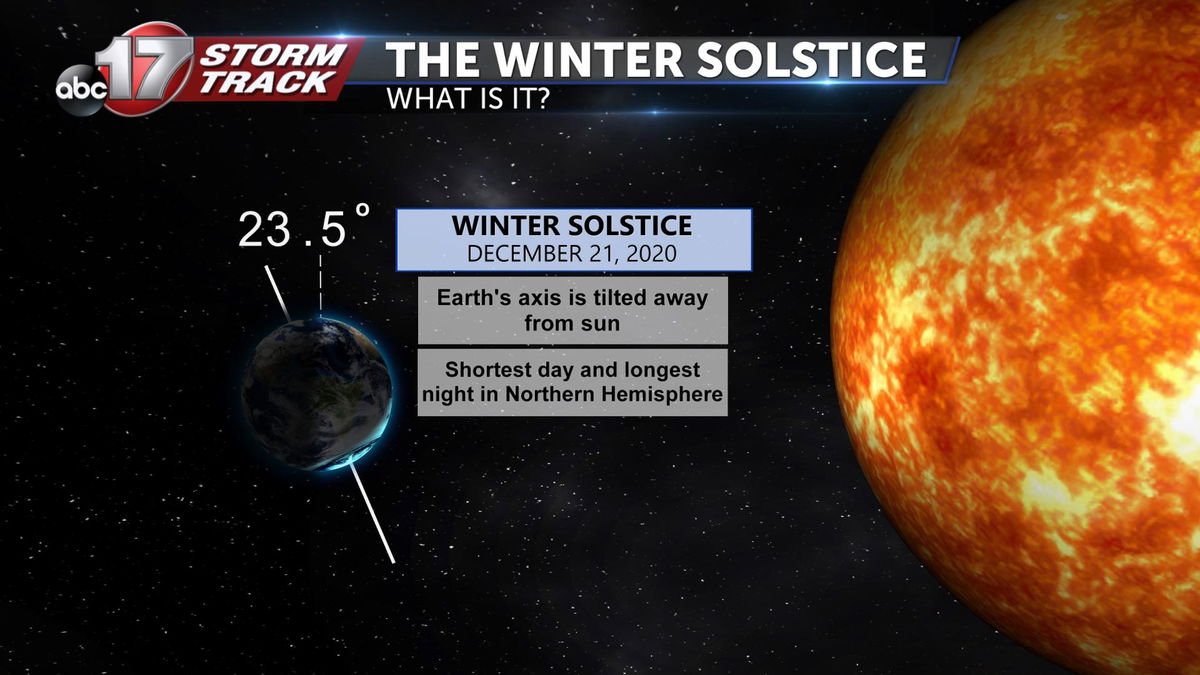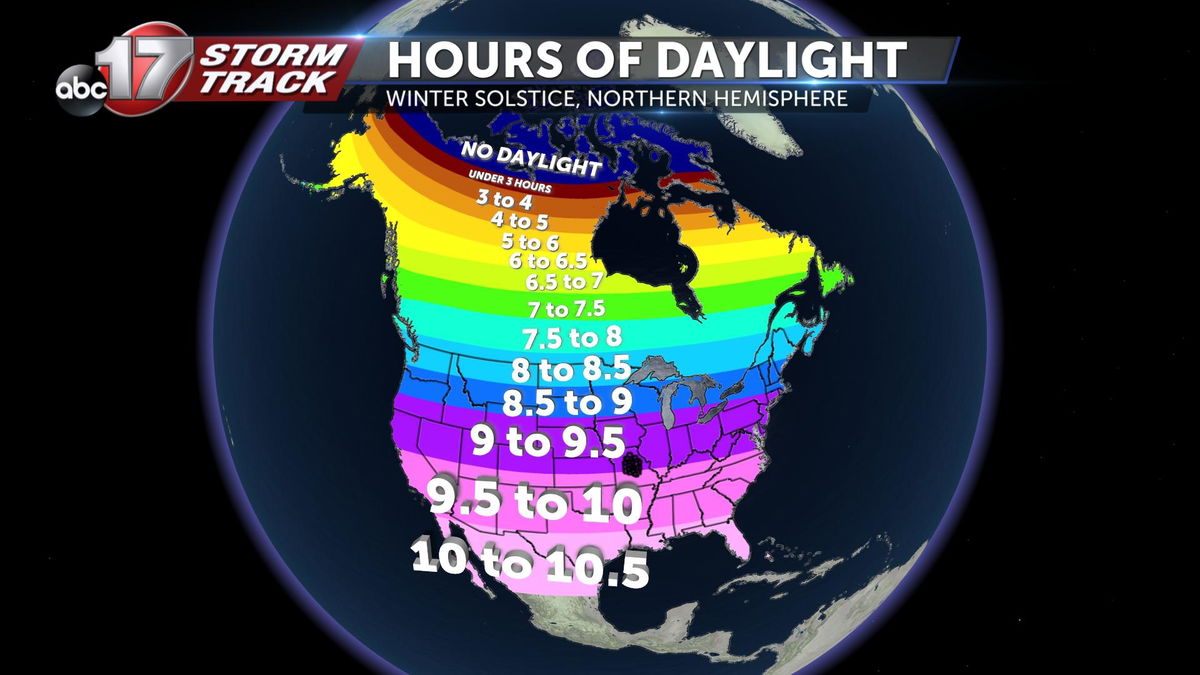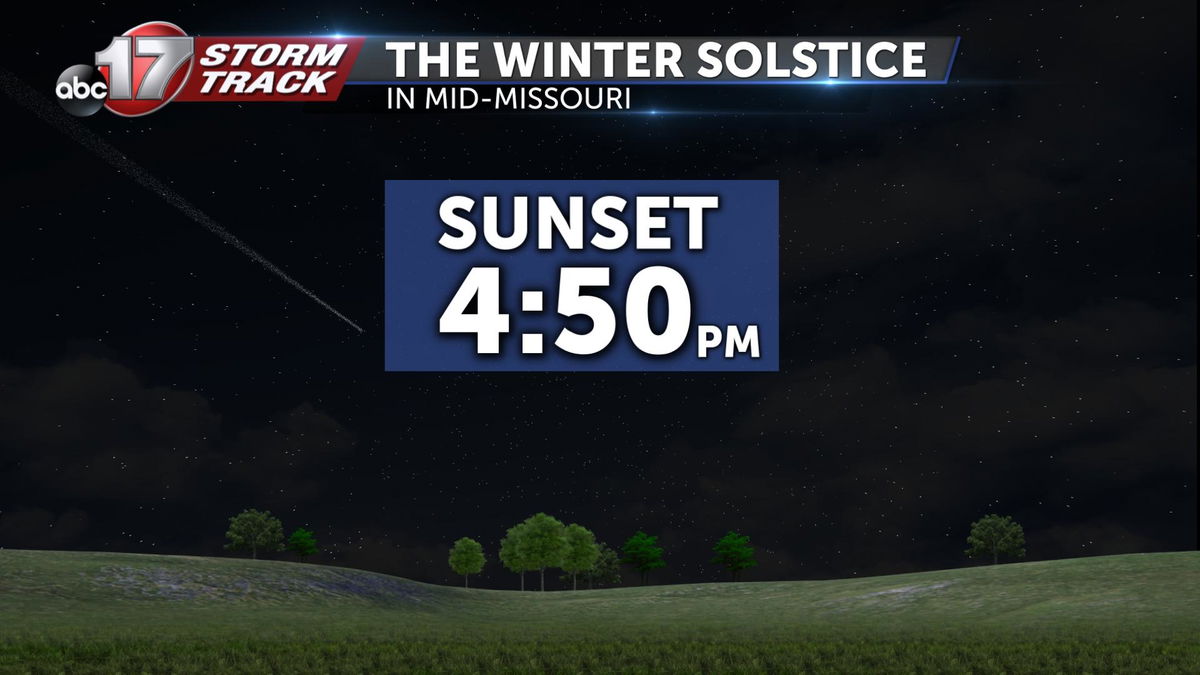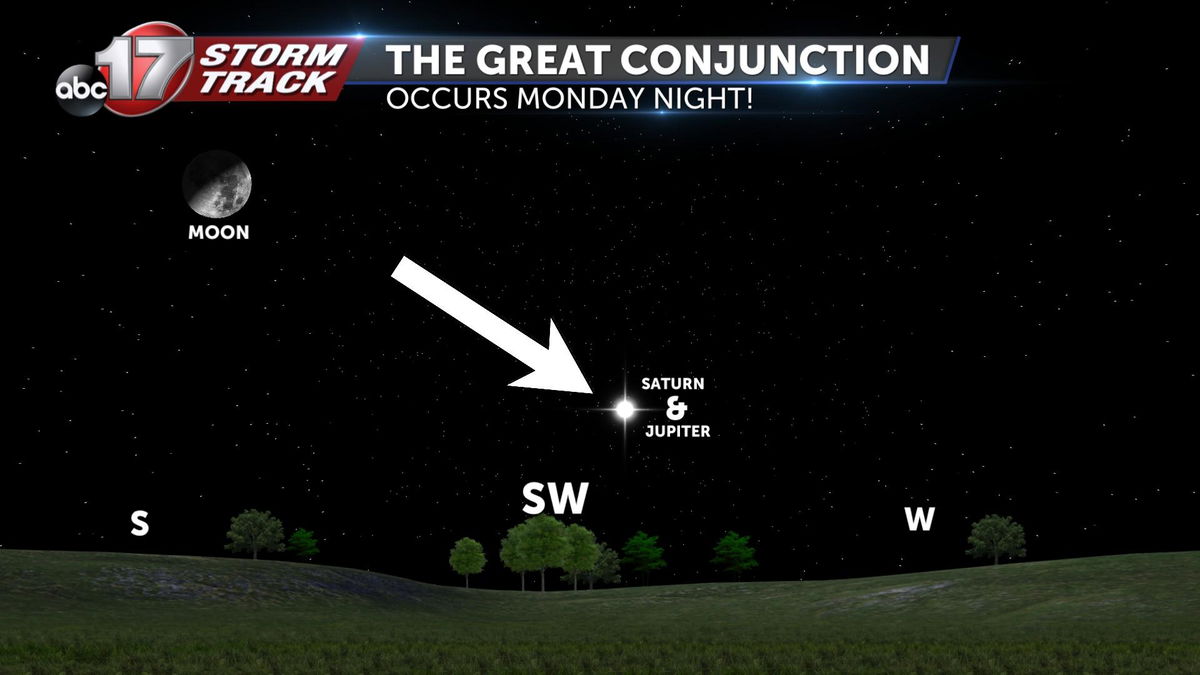Darkest Day of the Year: Explaining Monday’s Winter Solstice
The Winter Solstice is fast approaching. It's the northern hemisphere's shortest day and longest night, set to occur on Monday, December 21, 2020. This solstice occurs when the earth tilts on its axis, pulling the northern hemisphere away from direct sunlight.

In fact, as we approach this date, the further north that you get in our hemisphere, the shorter and shorter daylight gets-- for some places, the sun doesn't even fully come up for upwards of 60 days!
Here's a look at how much daylight is expected across North America. You can see that the continent has a wide range of expected sunshine by Monday. Near the arctic circle, daylight... isn't a thing. It's just dark the entire 24 hours of the "day".

By the time you get to mid-Missouri, we're able to manage around 9.5 hours of daylight.
Here's what the Winter Solstice looks like in mid-Missouri



And don't forget about the "Christmas Star" Monday night too! The Great Conjunction of Saturn and Jupiter will provide a beautiful sight in the southwestern sky Monday evening.
You can get more info on how to spot that in the Insider Blog from last week.

For those itching for more daylight, never fear! By this time next month, we'll have already gained an extra 30 minutes of daylight!
Baby steps!
-Luke
